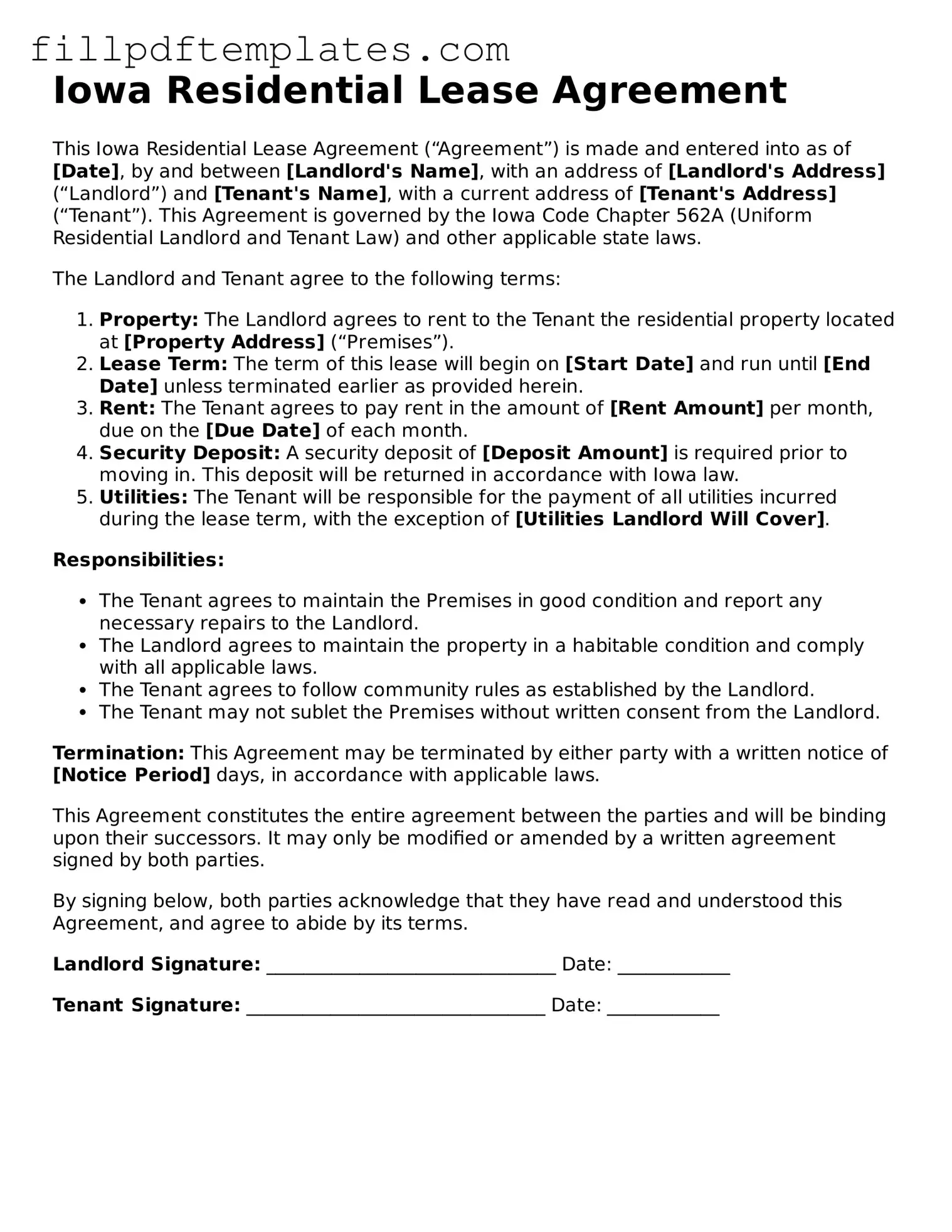Iowa Residential Lease Agreement
This Iowa Residential Lease Agreement (“Agreement”) is made and entered into as of [Date], by and between [Landlord's Name], with an address of [Landlord's Address] (“Landlord”) and [Tenant's Name], with a current address of [Tenant's Address] (“Tenant”). This Agreement is governed by the Iowa Code Chapter 562A (Uniform Residential Landlord and Tenant Law) and other applicable state laws.
The Landlord and Tenant agree to the following terms:
- Property: The Landlord agrees to rent to the Tenant the residential property located at [Property Address] (“Premises”).
- Lease Term: The term of this lease will begin on [Start Date] and run until [End Date] unless terminated earlier as provided herein.
- Rent: The Tenant agrees to pay rent in the amount of [Rent Amount] per month, due on the [Due Date] of each month.
- Security Deposit: A security deposit of [Deposit Amount] is required prior to moving in. This deposit will be returned in accordance with Iowa law.
- Utilities: The Tenant will be responsible for the payment of all utilities incurred during the lease term, with the exception of [Utilities Landlord Will Cover].
Responsibilities:
- The Tenant agrees to maintain the Premises in good condition and report any necessary repairs to the Landlord.
- The Landlord agrees to maintain the property in a habitable condition and comply with all applicable laws.
- The Tenant agrees to follow community rules as established by the Landlord.
- The Tenant may not sublet the Premises without written consent from the Landlord.
Termination: This Agreement may be terminated by either party with a written notice of [Notice Period] days, in accordance with applicable laws.
This Agreement constitutes the entire agreement between the parties and will be binding upon their successors. It may only be modified or amended by a written agreement signed by both parties.
By signing below, both parties acknowledge that they have read and understood this Agreement, and agree to abide by its terms.
Landlord Signature: _______________________________ Date: ____________
Tenant Signature: ________________________________ Date: ____________
